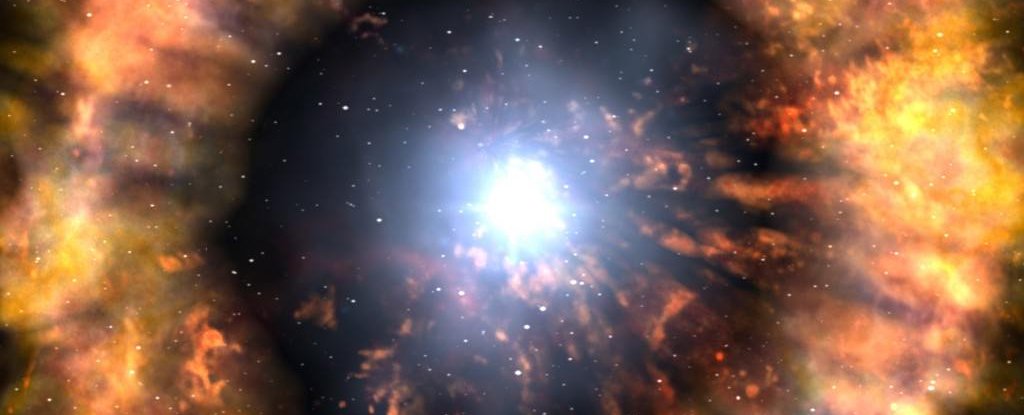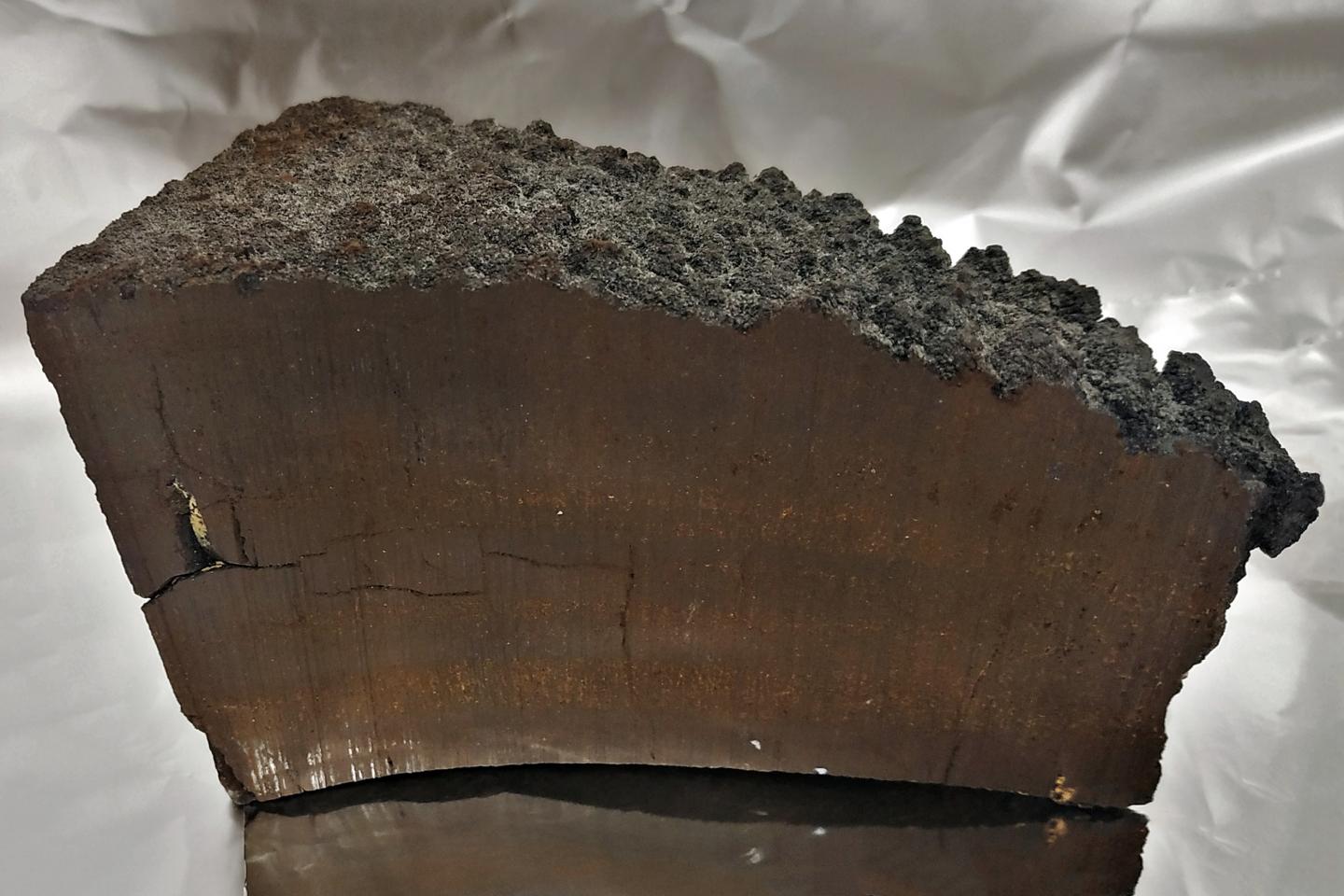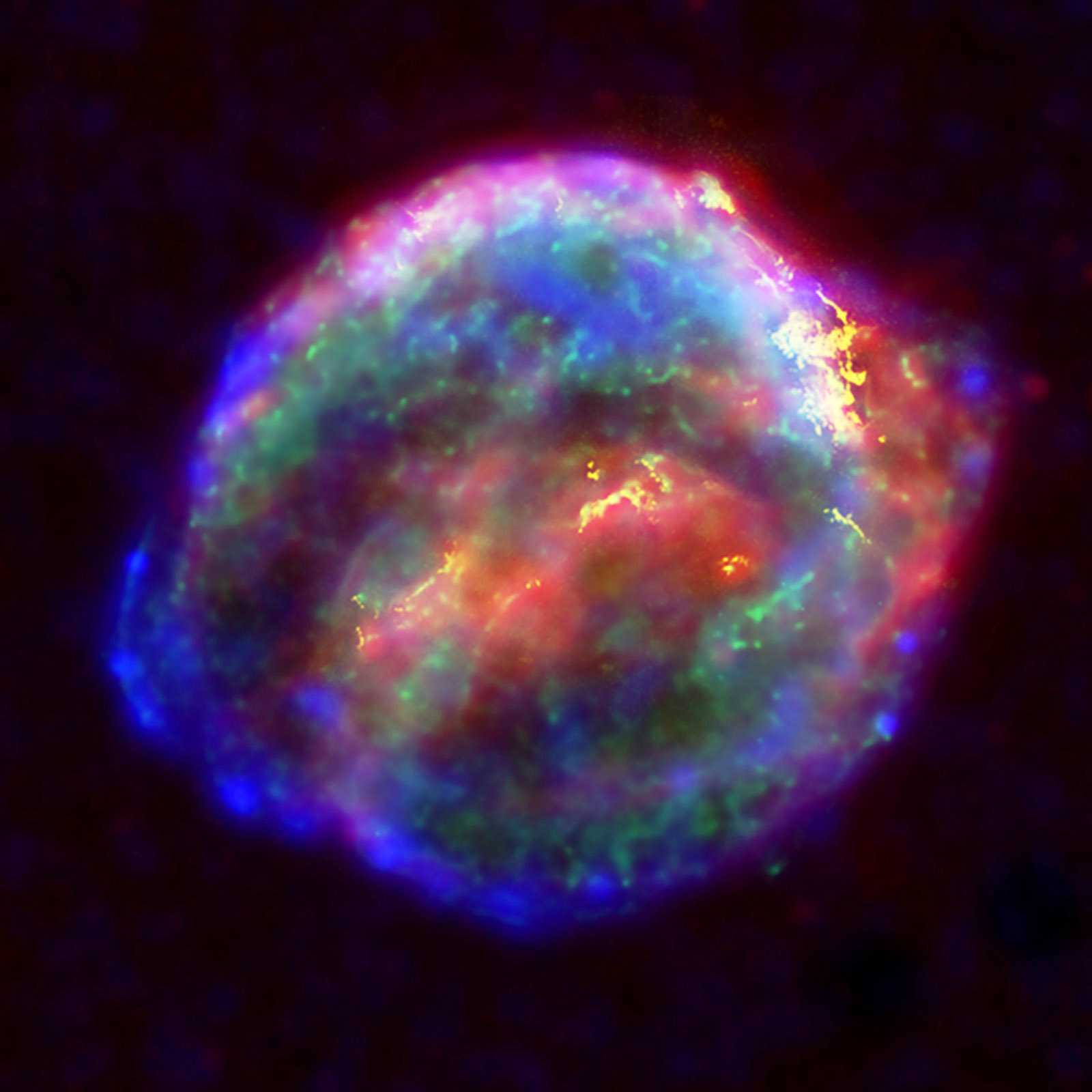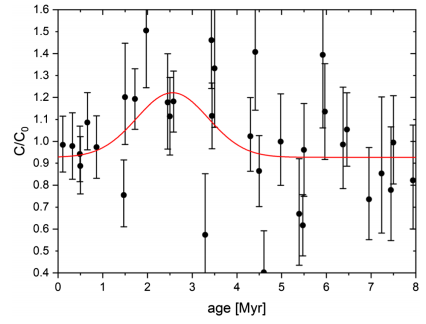
Posted on 10/05/2020 11:50:05 AM PDT by Red Badger

In its 4.5 billion year history, Earth has had to run the gauntlet. Numerous catastrophes have imperilled the planet, from massive impacts, to volcanic conflagrations, to frigid episodes of snowball Earth. Yet life persists.
Among all of the hazards that threaten a planet, the most potentially calamitous might be a nearby star exploding as a supernova.
When a massive enough star reaches the end of its life, it explodes as a supernova (SN). The hyper-energetic explosion can light up the sky for months, turning night into day for any planets close enough.
If a planet is too close, it will be sterilized, even destroyed. As the star goes through its death throes, it produces certain chemical elements which are spread out into space.
For years, researchers have puzzled over evidence that a supernova exploded somewhere in Earth's vicinity a couple of million years ago. The evidence is a concentration of 60Fe, an isotope of iron produced by supernovae, found around the Earth.
Now, a new study presents additional evidence of a supernova explosion near Earth 2.5 million years ago. This time, it's a concentration of 53Mn, another radioisotope produced by supernovae.
The study presenting the findings is titled "Supernova-Produced 53Mn on Earth." The lead author of the paper is Dr Gunther Korschinek from the Technical University of Munich. The research is published in the journal Physical Review Letters.
The study is centered on what are called ferromanganese crusts. They're made of rock, but look more like chocolate cake. They're deposits of marine sediments that grow over time, as iron and manganese oxides precipitate out of the seawater.
They keep a record of the chemicals in the source water as they form over time. Besides being a potential source of valuable minerals, they're also valuable evidence for scientists. The team of researchers behind this study examined samples of these ferromanganese crusts and found not only 60Fe, but also 53Mn.
The 60Fe found on the Earth is potential evidence of a supernova explosion in Earth's rough vicinity. 60Fe is known as an extinct radionuclide. Because its half life is 2.6 million years, any 60Fe on Earth should have decayed into nickel long ago. Finding it now means it was produced in more recent times, in astronomical terms.
But supernovae aren't the only thing that can synthesize 60Fe. It can also be produced by asymptomatic giant branch (AGB) stars. All stars in the low to intermediate mass range (0.6 to 10 solar masses) go through this stage of evolution near the end of their lives.
So it's possible that the 60Fe found on Earth came from one of these within the last few million years, rather than a supernova. How can the question of the source of the 60Fe be answered?
In their paper the researchers write that "An unambiguous, only SN formed radionuclide, such as 53Mn, detected in the same samples as the 60Fe, can solve this open question."
Now scientists have found 53Mn in the same ferromanganese crusts as the 60Fe. Unlike 60Fe, 53Mn can't be produced by AGB stars. It can only be produced by supernovae.

(Dominik Koll / TUM)(Dominik Koll / TUM)
Above: A chunk of manganese crust that began forming about 20 million years ago. It grew layer by layer as minerals precipitated out of seawater. Researchers found elevated concentrations of 60 Fe and 56 Mn in layers laid down about 2.5 million years ago. The presence of these deposits is evidence of a nearby supernovae explosion at that time. Chocolate Cake? Or Smoking Gun?
"The increased concentrations of manganese-53 can be taken as the 'smoking gun' – the ultimate proof that this supernova really did take place," says first author Dr Gunther Korschinek, in a press release.
The ferromanganese crusts at the center of this discovery look like some of the moistest, richest chocolate cakes you can imagine. But of course, they're hard as rock. They are rock.
To find the 53Mn in these curious-looking crusts, the researchers had to go hunting for individual atoms. They employed a method called accelerator mass spectrometry.
"A feasible way to detect 53Mn in Earth's reservoirs is, as in the case of the finding of 60Fe, direct atom counting by accelerator mass spectrometry (AMS)," the authors write in their paper.
That method of mass spectrometry is especially effective at separating a rare isotope from its more common neighbours. In this case, the researchers were looking for 53Mn in the midst of its more common brethren, 55Mn. 55Mn is the only "naturally occurring" isotope of manganese, and is stable.
It's not just the discovery of 53Mn that's significant; it's the concentration. Some 53Mn is expected to drift down to Earth as cosmic dust. But it's unusual to find more of it, like the researchers behind this study did. And its presence means there definitely was a supernova explosion in Earth's vicinity, about 2.5 million years ago.
"This is investigative ultra-trace analysis," said Korschinek. "We are talking about merely a few atoms here." Remarkably, the measurements not only detect the presence of 53Mn, but can also help understand the size of the star it came from.
"But accelerator mass spectrometry is so sensitive that it even allows us to calculate from our measurements that the star that exploded must have had around 11 to 25 times the size of the sun," Korschinek added.
That points to a large and extremely energetic explosion. Other than the presence of the supernova-born 53Mn, and the 60Fe, what effect did it have?
It was too far away to cause a mass extinction, but it likely did shower the Earth with cosmic rays. That likely affected the climate.
"However, this can lead to increased cloud formation," says co-author Dr Thomas Faestermann. "Perhaps there is a link to the Pleistocene epoch, the period of the Ice Ages, which began 2.6 million years ago."
So while it may not have been ultra-calamitous for Earth, it did have an effect.

(NASA/ESA/JHU/R. Sankrit & W. Blair)
Some researchers think that the supernova explosion at that time did trigger at least a partial extinction, called the Pliocene marine megafauna extinction. They point to not only the presence of elevated levels of 60Fe, but also to a feature out in space called the Local Bubble.
It's a gigantic, cavernous hole in the interstellar medium caused by one or more supernovae explosions. Now, the discovery of 53Mn just strengthens that hypothesis.
In their work, the researchers looked at samples of ferromanganese crusts of hydrogenetic origin, from four different locations in the Pacific Ocean. Two were from the Midway Atoll, one was from the Donizetti Ridge, and the fourth was from the Central Pacific.
The samples ranged in depth from 1,589 meters (5,213 ft) down to 5,120 meters (3.18 miles). Each sampling location yielded 15 samples of increasing depth, for a total of 60 samples.
They compared the concentrations of the supernova-born 53Mn with the more common 55Mn. When they graphed the ratios, it was clear that the amount of 53Mn laid down in the ferromanganese crusts was much higher around 2.5 million years ago.
"Since the excess of 53Mn is detected in the same samples and time range in which 60Fe has been identified," the authors write in their paper, "it confirms the SN origin of that 60Fe."
So not only do we now know that there definitely was a SN explosion in Earth's vicinity about 2.5 million years ago, we also have the very first detection of the unstable 55Mn isotope.

Above: The merged data from all four sampling areas. The C/C0 on the vertical axis represents the 53Mn/Mn ratios measured in the samples. There's a clear spike at the 2.5 million years ago mark.
"Thus, 53Mn is the second radioisotope from the same SN where 60Fe has been detected, and it is for the first time that 53Mn, formed by nucleosynthesis during a SN, has been found."
As for the effect that the SN had on Earth, that is the source of great conjecture, study, and debate. Some say it triggered a partial extinction in the aforementioned Pliocene marine megafauna extinction. Others say that it might have helped trigger humanity's conversion to bipedalism.
While this study doesn't venture into the effects the SN may have had on life, it does present ever stronger evidence in favour of the supernova explosion.
And while this SN was mostly just a close call for life on Earth, it's also a good reminder that Earth will be in the suspected kill-zone of a supernova once every 800 million years.
The cosmic clock is ticking.
This article was originally published by Universe Today. Read the original article.
Space dust, micro meteoroids, I would assume fell upon the earth a million years ago, or so.........................
Read a paper once that explained how the location of our solar system in one of the arms of the Milky Way was in pretty much the “sweet spot” for the possibility of life on Earth.
For stars located too close to the center of the galaxy, with a relatively heavy population of stars, the occurrence of nearby supernova is too common (even if only a couple of times every million years) to allow the evolution of living systems.
For stars located too far out on the spiral arms, nearby supernovae are too rare to allow the accumulation of significant amounts of elements higher in atomic number than iron - and a variety of those elements are absolute requirements for the kind of living systems found on Earth.
But if you’re in exactly the right location - and their hypothesis was we are - you get just the right occurrence of nearby supernovae to allow the incredbiy long period of time it takes to get to sentient creatures.
Yes, almost as if it was ‘planned’...............................
Let’s go ask Nancy Pelosi what it looked like.
Were “Women and minorities affected the worst” than white males by this event?
This is old news
That blowed up real good.
Cosmic rays are produced from massive galactic events like a supernovae and consist of matter particles like Fe or Mn that have additional neutrons making them radioactive.
The explosion accelerates the particles to nearly the speed of light. If the SN was 10,000 light years away it would take about 10,000 years for the particles to get here. In addition because they are traveling at nearly the speed of light they would not appear to “decay” relative to our Earth clocks which are at rest.
Once the particles arrived at the Earth and came to rest they began to decay. From the known half-life of these isotopes that was about 2.6 billion years ago.
There is growing evidence it was a micro nova from our sun.
said, "Cosmic rays are produced from massive galactic events like a supernovae and consist of matter particles like Fe or Mn that have additional neutrons making them radioactive"
This has not been studied that I'm aware of. The two major near extinction of humans bottle necks of human population of 70,000 years ago and 12,800 years ago also had the effect of a Y Chromosome(Males) bottleneck right after the both events. Y Chromosome are more radiosensitive then the X chromosomes. As a result for thousands of years after both these events the female/male ratio was 6 to 1 and 17 to 1 respectively.
I'm suggesting a micro-nova from our sun could be that trigger.
million y.a.
>So not only do we now know that there definitely was a SN explosion in Earth’s vicinity about 2.5 million years ago, we also have the very first detection of the unstable 55Mn isotope.
Typo 53Mn
Oddly enough, this puts it very close to the day of birth of one Nancy Pelosi....hmmmm…….
As a result for thousands of years after both these events the female/male ratio was 6 to 1 and 17 to 1 respectively.
Cue Dr. Strangelove reference ... "It vould not be difficult, mein Führer! ... I mean, Mr. President".
Looks more like chocolate cream pie
Dang you found it first.
Probably came from the Ford Galaxy.
Since nobody was around to see it then it is based 100% on theory.
“As a result for thousands of years after both these events the female/male ratio was 6 to 1 and 17 to 1 respectively.”
I wonder if those events resulted in a genetic predisposition toward male promiscuity.
The cover story for the Hughes Glomar Explorer was it was going to mine manganese nodules from the sea floor.
The real purpose of the ship was to recover the Russian missile sub K-129, from a depth of 18,000 feet:
https://en.wikipedia.org/wiki/Project_Azorian

Disclaimer: Opinions posted on Free Republic are those of the individual posters and do not necessarily represent the opinion of Free Republic or its management. All materials posted herein are protected by copyright law and the exemption for fair use of copyrighted works.